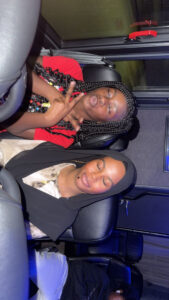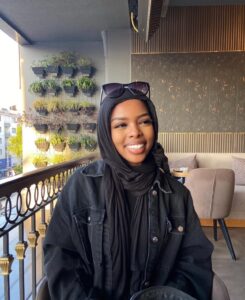"I am planning our meeting for this week and working to make sure that the objective continues to center around decision making. In the past I feel like I have made the first month about the students and their strengths, values and passions, which I continue to add to these first meetings. But this time, I also am diving into decision making as the clear objective – with knowing oneself a means to making good decisions.
They have already identified their strengths. That is always a good start. Especially for me to get to know them. But this group was excited to learn some business tools – so I went right into opportunity cost – and then Gantt charts. Slowing down, planning and really thinking about decision making is a good skill.
This week my plan is to dive into Values. What are their values and how does that influence decision making. I believe that this works on a personal and business level so we can move right into Mission Statements either this week or next. Here is my plan:
Gantt Chart reflection –
What did you learn last week?
What about the process?
How did preparing the Gantt Chart help our cooking process?
Give a Gantt Chart case study so that they can practice on a couple business case studies and draw the Gantt Charts. This way I can see their understanding.
_____________________________________________
Values? How does that affect our decisions?
Read a scenario aloud or have them read them silently and choose from the answers below.
Have students walk to sides labeled:
* Yes, I’d do that
* No, I probably wouldn’t
* Optional: Maybe / Not sure
Or choose one of the answers above.
After they answer the question, Let them know the value behind the scenario.
Have then note the values that resonate with them.
Can ask some reflection questions
* Was this hard or easy to choose by answering the scenario?
* Do you see yourself living this value in your life?
* Were you surprised that this is a value that you exhibit when making decisions?
1. Family
You’re in the middle of an online game with your friends, and you’re doing really well. One of your parents asks for your help bringing in groceries or setting the table for dinner. Do you pause the game to help?
2. Grace
A teammate messes up during a game and costs you the win. Afterward, they apologize. Do you accept it without holding a grudge?
3. Loyalty
Your best friend is being gossiped about by others in your group. Do you speak up to defend them, even if it risks your spot in the group?
4. Connection
Your classmate seems quiet and always eats lunch alone. Do you go out of your way to talk to them or invite them to join your table?
5. Creativity
You’re working on a group project and want to try a completely new approach no one has seen before. Your groupmates want to play it safe. Do you push for your idea?
Your teacher assigns a project with clear instructions, but leaves some room for how it’s presented. Most students are doing slideshows. You have a unique idea—like making a short video, building something, or writing a story. It’ll take more effort and might stand out. Do you go for the creative option?
6. Diversity
You’re placed in a group with people from very different backgrounds, interests, or cultures. Do you embrace the opportunity to learn from them, or stick with your own views?
During lunch, some classmates are joking about a culture or accent that isn’t their own. It makes you uncomfortable, especially since you know students from that background are nearby. Do you speak up, change the subject, or stay silent?
7. Respect
A substitute teacher gets some facts wrong. Your friends start laughing and mocking them. Do you join in, or stay respectful?
8. Generosity
You’re doing a community service project at a local shelter. Most of your classmates are just going through the motions, taking photos for their portfolios. You notice one of the staff members is struggling to carry supplies. No one else offers to help. Do you step in quietly, even though no one is watching — and even if it means missing out on the “cooler” part of the activity?
9. Integrity
You’re working on a take-home assignment that’s meant to be completed independently. A friend sends you their answers in a group chat “just in case you need help.” You didn’t ask for them, but now you have them. Do you ignore the message and complete the work on your own — or do you use what they sent to double-check your answers?
10. Love
A friend is going through a really hard time. They’re acting distant and angry. Do you show up for them anyway?
11. Joy/Play
You’ve been studying hard all week for multiple exams. A group of friends invites you to join them for a casual game of soccer or a silly TikTok video challenge just to blow off steam. You feel like you “should” keep working — but you also kind of want to have fun. Do you let yourself take a break and enjoy the moment?
12. Forgiveness
Someone betrayed your trust, but they’ve apologized and seem sincere. Do you try to move on and rebuild the relationship?
13. Excitement
Your school is offering a last-minute chance to go on a new, unexpected trip. It’s out of your comfort zone. Do you go for it?
14. Patience
You’re teaching someone how to do something you’re good at, but they keep making mistakes. Do you keep calmly helping them?
15. Faith
Things aren’t going well lately — with school, sports, or friends. Do you still believe things will get better, even if there’s no clear proof?
16. Wisdom
You have a choice between what’s fun right now and what’s better long-term. Do you choose what’s wiser, even if it’s boring?
17. Beauty
You see something really simple — like the sunset or a street performance — and pause just to appreciate it. Do you take time to notice beauty?
18. Caring
A friend doesn’t say anything, but you can tell they’re not okay. Do you check in with them even if it’s awkward?
19. Commitment
You signed up to help organize a school event, and the team is counting on you. A few days before the event, you’re invited to something else — a concert, game night, or relaxing day out with friends. It sounds more fun, and you’re tempted to cancel your original plan. Do you stick with your commitment, even if the other option feels more appealing?
20. Honesty
You accidentally break something at school. No one sees you. Do you report it or stay quiet?
21. Adventure
You’re offered the chance to try something you’ve never done before — like rock climbing, traveling, or performing. It feels risky. Do you go for it?
22. Kindness
A classmate is being picked on. They’re not your friend, and no one else is stepping in. Do you show them stand up for them?
23. Teamwork
You’d rather work alone, but your group assignment depends on collaboration. Do you make the effort to truly work as a team?
24. Communication
You feel hurt by something your friend said. Do you bring it up in a respectful way or just let it sit and grow?
25. Learning
You bomb a test. Instead of brushing it off, do you ask the teacher for help so you can actually understand?
26. Excellence
You finished an assignment that’s “good enough,” but you know you could make it great with more effort. Do you go back and improve it?
27. Innovation
Your club has always done things one way, but you see a better way. Do you speak up and try to change the system?
28. Quality
You’re making something — maybe art, music, or a build — and you want to rush it. Do you slow down and focus on making it great?
29. Contribution
Your class or team needs someone to volunteer time or effort. You’re not required to help. Do you step up anyway?
30. Strength
You’re going through a tough time — maybe you’re overwhelmed with school, facing problems at home, or feeling isolated. Part of you wants to just shut down or pretend everything’s fine. But another part knows you need to talk to someone or ask for help. Do you find the strength to open up and keep going, even when it feels really hard?
31. Cooperation
You’re paired with someone you don’t like for a project. Do you try to find common ground and work together?
32. Friendship
A friend starts making choices you don’t agree with. Do you talk to them honestly, even if it might create distance?
33. Encouragement
One of your teammates has been practicing hard but still struggles during games. After they make a mistake, you notice they look frustrated and discouraged. Do you take a moment to quietly offer some positive feedback or support to help them keep going?
34. Charisma
You’re in a group setting and everyone’s being quiet and awkward. Do you step up and bring energy to get people talking?
35. Humor
The room feels tense or people are upset. Do you try to lighten the mood with a joke or something funny — without crossing the line?
36. Leadership
You see a group losing focus and falling apart during a task. Do you step up, organize, and guide — even if you’re not the assigned leader?
37. Balance
You’re overloaded with school, sports, work, and social stuff. Do you set boundaries and create space to rest?
38. Courage
You witness someone being treated unfairly or bullied at school. Speaking up might make you a target or cause problems with your friends. Do you stand up for that person anyway, even if it feels risky or uncomfortable?
39. Compassion
Someone is acting angry or mean — but you know they’ve been going through a lot. Do you respond with compassion instead of defensiveness?
40. Gratitude
You realize a teacher, coach, or friend has quietly helped you a lot. Do you take time to actually thank them?
List of Values
Some reflection questions –
This value matters to me because….
If I ignored this value I’d feel….
What’s the long-term outcome?
What’s the short-term outcome?
What is an example of a decision that you have made that matches this value?
And then at the end of the day – ask them which of these values feels like a guide for your decisions right now?
And we will not have any time after this I am sure. I am hoping to have them add their values to the values path. https://thewonderment.com/opportunities/values/
Of course if we have time we will dive into reading and analyzing mission statements – but I don’t think that will happen – so I will just leave it here.
Mission Statement?
verbs
And there is always a chance that I have a guest speaker come and explain Gambling Theory as a way to make decisions. (I know a former professional gambler. And the boys are all interested in math.)"









































